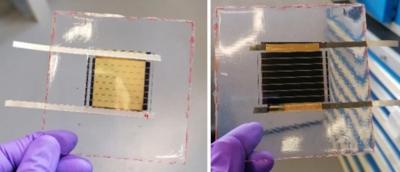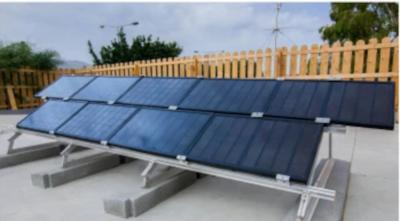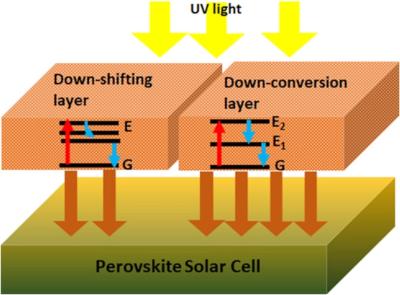Perovskite-Info weekly newsletter
Published: Tue, 06/28/22
The Perovskite-Info newsletter (June 28, 2022)
Cannot read this? View it online here
Flexible perovskite solar modules with record-breaking performance developed as part of APOLO project
The CEA at INES has reported the design of flexible perovskite solar modules with a surface area of 11.6 cm2 and a power conversion efficiency of 18.9% (stabilized efficiency > 18.5%). This performance is said to be a world record for flexible perovskite modules over 10 cm2.

Perovskite-based modules before and after flexible encapsulation. Image credit: CEA
For some applications, the use of flexible substrates may be attractive for single-junction perovskite technology as it opens the way to high-speed, low-temperature printing processes. Thus, it becomes possible to use low cost substrates whereas inorganic flexible technologies, such as CIGS, require higher temperature processes and substrates that are more expensive. Many teams around the world are trying to meet the challenges of making larger area devices with sufficient stability for real-life applications. This is one of the tasks standing before partners of the European APOLO project, as part of which these results were obtained.
Researchers create databases for perovskite and dye-sensitized solar cells
University of Cambridge scientists have created two automatically generated databases presenting photovoltaic properties and device material data for dye-sensitized solar cells (DSCs) and perovskite solar cells (PSCs).
The scientists used the ChemDataExtractor text-mining toolkit, which they described as a “chemistry-aware” natural-language-processing (NLP) tool. It was applied to 25,720 scientific articles comprising 660,881 data entries representing 57,678 photovoltaic devices. The database for the dye-sensitized devices included 475,045 entries organized into 41,680 records. The one for perovskite cells included 185,836 entries organized into 15,818 records.
Researchers integrate large-area graphene-perovskite solar panels into stand-alone solar farm
An international research group, including teams from CHOSE at the University of Rome Tor Vergata, Hellenic Mediterranean University in Greece and others, has developed a large-area perovskite solar panel with graphene-doped electron transporting layers (ETLs) and functionalized molybdenum disulfide (fMoS2) buffer layers inserted between the perovskite layer and the hole transporting layer (HTL).

The team reported that with increasing temperatures, the module exhibited a smaller drop in open-circuit voltage than commercially available crystalline silicon panels.
Perovskite-based electronics can program and reprogram computer hardware on demand through electrical pulses
A multi-institutional team, including the U.S. Department of Energy’s (DoE) Argonne National Laboratory, has developed a perovskite-based approach with which computer chips can be designed to learn to reconfigure their circuits when presented with new information. It does so by mimicking functions in the human brain with so-called “neuromorphic” circuits and computer architecture.
“Human brains can actually change as a result of learning new things,” said Subramanian Sankaranarayanan, a paper co-author with a joint appointment at Argonne and the University of Illinois Chicago. “We have now created a device for machines to reconfigure their circuits in a brain-like way.”
Researchers examine the benefits of down-conversion materials for perovskite solar cells
An international group of researchers from Swansea University, Indian Institute of Technology, University of Jammu, CSIR and Khalifa University of Science and Technology recently examined how down-conversion (DC) materials could be used to improve the performance of solar cells based on perovskite materials. The team reported that such materials could result in an electric yield enlargement by converting ultraviolet (UV) light to visible, while also providing UV shielding.

“The DC materials can absorb the high-energy photon (300–500 nm) and re-emit a longer-wavelength photon to which the photovoltaic (PV) device is more sensitive,” the team said. “Various types of DC materials have been investigated for this purpose like quantum dots (QDs), oxides, luminescent glasses, lanthanides, and organic dyes.”


